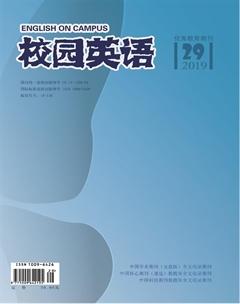The Adverse Impact on Immigrant Women in the Workplace
【Abstract】Although some scholars believe that family reunification system in the 1965 Immigration and Naturalization Act has benefited immigrant women workers to some extent, in the long run, it may have negative impact on immigrant women.
【Key words】adverse impact; immigrant women; family reunification system; job
【作者簡介】张慧,四川外国语大学。
A report in 2000 reveals that American immigrant women are scattered in two extreme in the workforce, a few of them are engaged in high-trained professional jobs, while the majority are performing poorly-paid domestic and service occupations (Strum and Tarantolo). It is easy to note that most immigrant women are taking jobs that are far from decent. Although multifaceted reasons lie in this situation, family-based immigration system since the 1965 Immigration Act can explain as well.
Abrams summarizes family reunification systems contribution to three types of workforce: market labor, nonmarket labor, and “gray” market labor (19). However, whichever the types of work the family reunification system can lead to, it may put immigrant women into a more limited range of occupations, and even trap them into the lower labor market. First, in the situation of market labor, Abrams posits that the family-based system may be an effective way of screening for labor migration since it can offer greater flexibility for low-skilled workers who can accept seasonal or temporary jobs and jobs in new areas than high-skilled workers whose occupations were tied to a certain area (Abrams 20). Indeed, family-based system can screen for low-skilled workers, but it also means that a large number of women immigrants coming through this way are going to be pushed to these low-skilled and temporary jobs. Since after coming to America, they have fewer chances and resources to get occupational training or education due to their low education attainment and insufficient skills. These low-skilled and temporary jobs, in the long run, may impede immigrant women to get further training and education, and finally inhibit their career advancement. Therefore, most of the occupations in the labor market for immigrant women can only tie women to such jobs, and they have few chances to integrate into descent jobs.
Second, as Abrams mentions that, immigrants admitted through family-based system are more likely to fall into unpaid, non-market labor in the home, such as domestic jobs, including housework, child care, and elder care (21). However, these non-market domestic jobs are always performed by women, largely by immigrant women. According to the American Community Survey from 2005 to 2009, 95% of domestic workers are female, the majority of whom are racial and ethnic minority groups, and 46% of domestic workers are foreign-born (Burnham and Theodore 11). More often than not, housewives sacrifices at home have often been neglected and not respected. As they get no pay, they may lose their deserved status in the family and have fewer chances to find a decent job. From this perspective, family-based system may undermine women immigrants working capacity, rendering them less adaptable and competitive in the fierce labor market.
Third, Abrams maintains that women coming through family-based system can join in “gray” market labor, usually referring to paid domestic jobs, which is often dismissed by the employment-based system (22). These jobs often get unregulated, but many immigrant women who enter into the United States to reunite their family before obtaining their legal status and cant find other legal jobs may be allured to join in. However, as these jobs are performed at home, employees may not receive from employers the necessary benefits, such as health insurance. Therefore, in the long run, it is far from favorable for immigrant women to develop in the United States.
Above all, whether immigrant women coming through family-based system are engaged in market jobs, non-market jobs, or “gray” market jobs, their jobs are far from decent occupations which native-born American women are reluctant to perform. These jobs may seem to provide opportunities for immigrant women, but in the long run, female immigrants development will be badly impeded.
References:
[1]Abrams, Kerry. What Makes the Family Special?[J]. The University of Chicago Law Review,2013,80,1:7-28.

